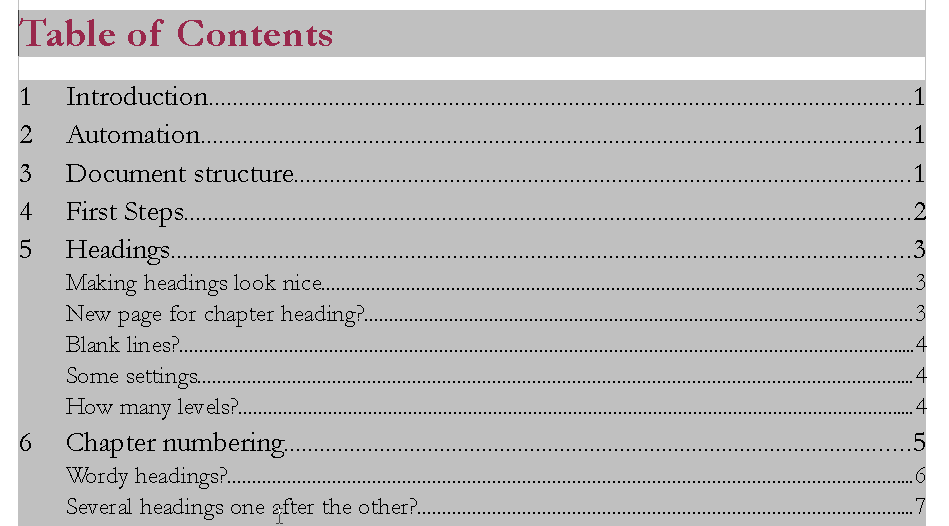
Having told the program what are your headings and having activated their automatic numbering, you can now go on to inserting an automatically generated Table of Contents: Insert › Indexes and Tables › Indexes and Tables.

Illustration 6: Table of contents with indented alignments
In the pop-up menu you can Evaluate up to Level of your choice. So you might well have three levels of headings in your text but choose to include only the uppermost two levels.
To update your table of contents as well as any other inserted material open menu Tools › Update › Update all.
As you can see in illustrations 6 and 11 , the numbering of the second level is aligned right under the entry of the first level creating a kind of staircase effect. For this to work properly you need to have automatic chapter numbering turned on, as described in section 5.
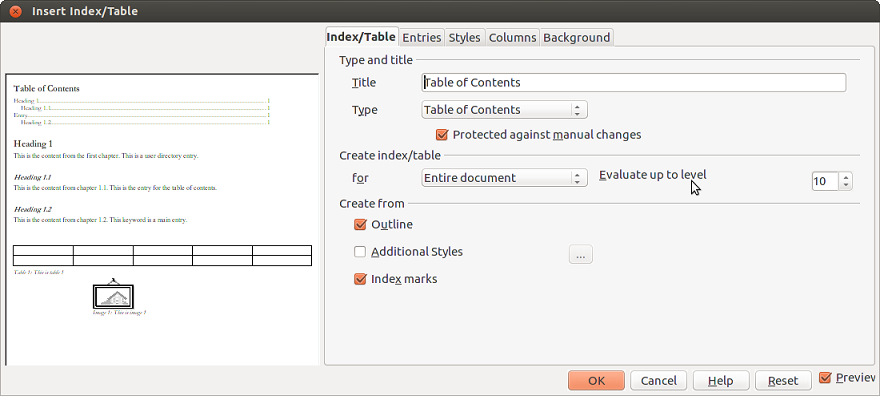
Illustration 7. In the popup menu Insert Index/Table you can adjust the number of levels you would like to evaluate.
By default the table of contents contains the following four Entries (see illustration 7):
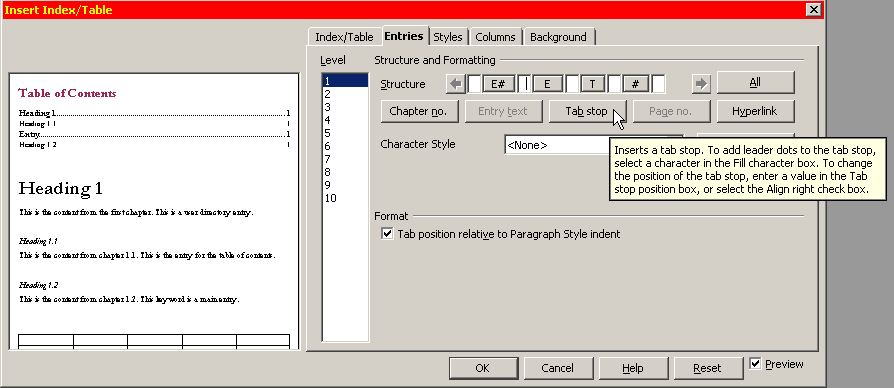 Wfs008 standard entries.png" width="894" height="388" />
Wfs008 standard entries.png" width="894" height="388" />
Illustration 8. The 4 standard entries. Add a Tab stop T between E# and E. Leave position at 0cm.
You need to insert a fifth entry, namely a Tab stop, in the white area between the E# and the E as shown in illustration 7. Leave position at 0.00cm (you will adjust this value in next step). Press All so this setting applies to all levels. Confirm OK.
| Note: If you inadvertently insert an entry too many just click on it and press Del to remove it. |
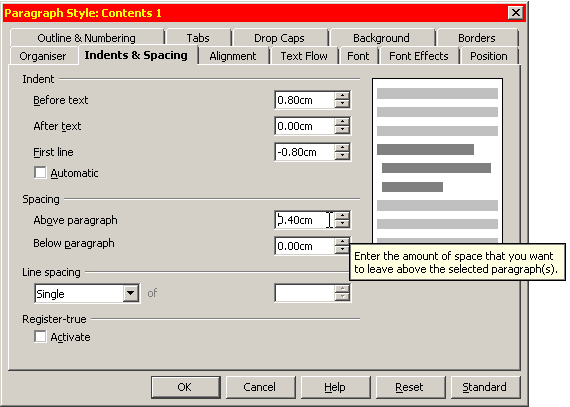
Illustration 9. Setting the amount of indenting needed in "Contents 1"-style
Your table of contents now appears. You will notice, however, that the entries have been moved to the right with the dotted tab stops in the wrong place. This is due to the value 0,0cm which you now need to adjust: right click on any level 1 table of contents’ entry and choose the option Edit paragraph style… Under the tab Indents & Spacing change value of Indent › Before spacing to 0,80cm and that of Indent › First line to -,80cm (i.e. a negative value). Repeat these steps for levels 2 and 3 using the values listed in table 3. The individual settings for indenting will depend of course on the kind of chapter numbering you have chosen. Roman numbering for instance takes up more space than Arabic type numbering. Better allocate too much space than too little.
| Note: The important concept to keep in mind is that you need a negative indenting to accommodate the chapter number (see illustration 11). |
| Indent before text | Negative indent First line | Spacing before paragraph | |
|---|---|---|---|
| 1st level | 0.80 cm | -0.80 cm | 0.4 cm |
| 2nd level | 1.80 cm | -1.00 cm | 0.1 cm |
| 3rd level | 3.00 cm | -1.20 cm | 0.1 cm |
Table 3: Indentation needed for first three levels when using full sub-levels as ‘5.7.2’. The Spacing above paragraph lightens the overall picture, however, you should use single line spacing.
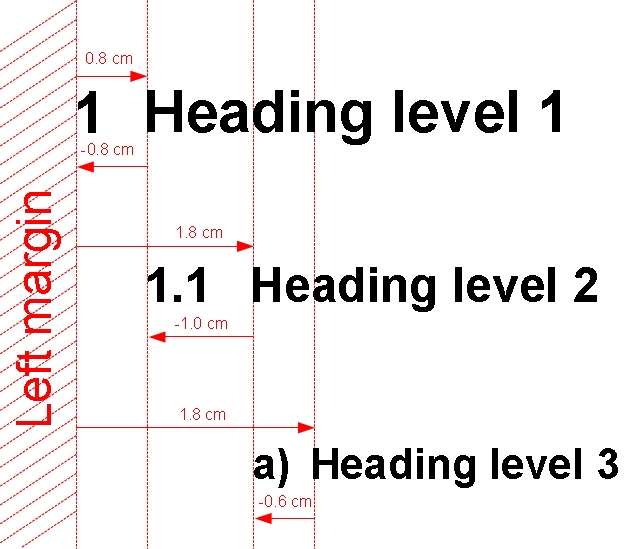
Illustration 11: Abstract view of indenting – indentation depends on width of chapter number
Apart from the table of contents you might want to insert an Illustration index or some other kind of index. The same steps apply, just choose the Type you want. The various tables, illustrations and so on in your text all need to have a Caption, which will then appear in the index. You can also create an alphabetical index for your thesis or a lengthy book: mark the words you would like to have indexed and go to menu Insert › Indexes and tables › Entry. Here you can also modify the exact text of your entries.
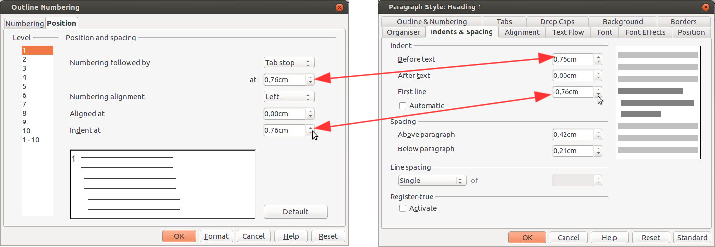
Illustration 10. You need to leave enough room for your chapter numbers. Standard for first level headings is 0,76cm. You will notice the same values also appear in the paragraph style Heading 1 (First line indent preceded by a minus sign though!). Make sure this correspondence between both menus is maintained in case you change these values. This will ensure the proper alignment of header text, each line starting neatly directly under the preceding line, leaving the chapter number in its own space to the very left.